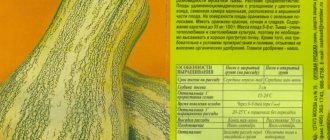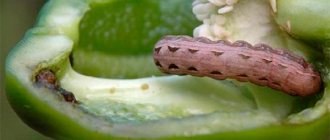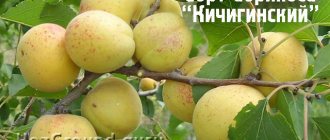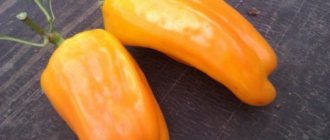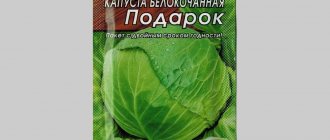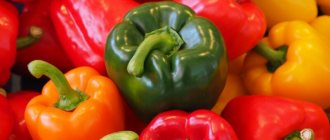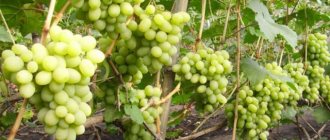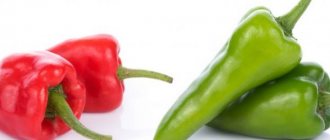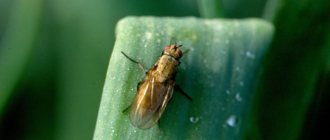- 5.1 Watering
Sweet pepper Gift of Moldova is a vivid example of how long a plant variety can be popular if its quality meets demand in many respects. The variety began to spread in 1973, and many gardeners still prefer to grow Gift of Moldova. The unpretentiousness of the plant, the ideal shape of the fruit, and good productivity have made the pepper variety a favorite in summer cottages and garden plots.
Plant characteristics
The variety was bred at the Moldavian Research Institute, and in more than forty years it spread to Siberia and the Far East. According to reviews from vegetable growers, Podarok Moldova pepper is not inferior to many modern hybrids. From 1 sq. m with timely and regular care, you get 5-8 kilograms of juicy fruits. Photos of luxurious pepper bushes Gift of Moldova confirm reviews of the variety’s yield.
The plant is grown in open ground and in greenhouses. The bushes withstand temperature changes and humidity fluctuations. You just have to pay more attention to the plants during flowering so that ovaries form. Lovers of their own vitamin products plant the variety even on balconies in cut-off 5-liter containers, and receive fresh fruits as an exquisite delicacy. Bell peppers really activate the release of endorphins, just like chocolate. It simply needs to be included in the diet of a modern busy person.
The characteristics of a variety are determined by its ripening time. Pepper Gift of Moldova produces mid-early fruits, and their description from the beginning of the variety’s distribution has determined consumer demand for the form of these once exotic vegetables. The structure of the Gift of Moldova pepper berry is very convenient for stuffing. The average period of ripeness makes it possible to pick fruits even in the phase of technical maturity in mid-summer. Biological maturity occurs two weeks later, 125-135 days after planting the plants in a permanent place. The fruits of this variety are well stored in cool rooms and can withstand long-distance transportation.
Diseases and pests
If agricultural practices and care rules are followed, diseases and pests appear quite rarely. However, no one is safe from bad weather conditions, constant rain and temperature changes. Under such conditions, illnesses and parasites appear.
The most common pepper diseases are:
- Fusarium
- Rot (gray, white and black)
- Spotting (black, brown, bronze)
These diseases appear with strong temperature changes and high humidity. Fungicides are used for treatment, and the affected parts of the plant are removed. Often diseases affect the plant so severely that it is advisable to remove it. In order to avoid this or at least reduce the risk of disease development, it is necessary to follow the rules for planting and caring for pepper. Do not thicken the plantings, weed the vegetable beds in a timely manner and do not over-moisten the soil.
Before planting, seeds can be dipped in a weak solution of potassium permanganate for disinfection for an hour.
Pests may include aphids, spider mites and slugs. Parasites are controlled using insecticides. But if pests appear during fruit ripening, it is better not to use chemicals. Treat the plant with a solution of garlic and nettle. The procedure is carried out at least twice with a break of a week.
With proper care and proper planting, the plant is unlikely to get sick. However, the gardener should be careful and monitor the development of the pepper.
Description of the variety
Semi-standard pepper bushes Gift of Moldova are compact, low, grow up to 0.35-0.5 m, not spreading, up to 30-38 cm in diameter. The root system is well developed, the stem is of medium thickness, elastic, and can withstand a large load of fruits. The internodes are short and many ovaries are formed. Bush of medium foliage. The leaves are small, bright green.
Hanging pods. Large, smooth, cone-shaped fruits 7-10 cm long, diameter near the stalk 4-5 cm. Weight from 50 to 100 g, average fruit weight is 70-80 g. At technical maturity, the fruits are light green in color, becoming bright when ripe -red. The skin is thin and dense. The pulp is juicy, 5-6 mm thick. The excellent taste of the fruit is a guarantee of the popularity of pepper. The pods are crispy, sweet, with a characteristic peppery taste. Suitable for fresh salads and various preparations.
Important! Pepper will not produce a good harvest on acidic soils. Such soils must be alkalized in the fall by adding lime or dolomite flour at 300-700 g per 1 sq. m. m.
Advantages and disadvantages
Judging by its longevity in gardens, the Gift of Moldova pepper has high merits, as evidenced by reviews and photos of the fruits of those vegetable growers who constantly grow it.
- Beautiful, convenient and even shape of the fruit;
- Mid-season;
- Stability of fruiting;
- Productivity;
- Unpretentiousness and endurance of the plant;
- Resistance to Fusarium wilt;
- Good keeping quality, transportability;
- High commercial quality.
The disadvantages include the fact that the fruits of the Podarok Moldova variety are quite thin-walled compared to current hybrids. This variety of pepper, like any other, belongs to plants that come from warm regions that require the gardener’s close attention.
Comment! Peppers should not be planted in an area where nightshade crops grew: tomatoes, potatoes, eggplants.
Plant care measures
- It is necessary to cut off the first formed flower on the bush, then many fruits will form.
- It is recommended to collect the first fruits during the period of technical ripeness. This way you will increase the productivity of the plant.
As can be seen from the article, the Gift of Moldova variety is excellent for growing in a garden plot. And our tips will help you get a rich harvest!
Growing seedlings
Pepper Gift of Moldova must be grown by sowing seeds for seedlings. Before determining the planting date, gardeners calculate when and where the plants will be planted. February sowing is intended for greenhouses, and seeds for seedlings for planting peppers in the garden are sown in March. A month and a half is enough for seedlings to get stronger and begin the growing season in a permanent place. If the shoots have already sprouted at the beginning of March, the first fruits can be picked by the end of June.
Warning! Pepper seedlings take a long time to take root after picking. Usually the seeds are sown immediately in separate containers.
Preparing soil and containers for seedlings
When starting sowing, one more fact is taken into account. Seedlings of the Gift of Moldova variety rise quickly and grow to the sides. Therefore, individual pots do not need to be placed close to each other so that the plants can develop freely. It is best to place pepper seeds one at a time in special seedling cassettes.
- The soil can be purchased at the store or prepared independently. It should be nutritious and loose;
- Sand, humus or peat are added to clay soils;
- If the soil is sandy, add more humus.
Sowing
Peppers of the Podarok Moldova variety are often grown from seeds collected with one’s own hands.
- Before sowing, they are disinfected for 20-30 minutes in a pink solution of potassium permanganate;
- To speed up the germination of seeds, they are soaked in clean water for 10-12 hours;
- The wet seeds are dried and sown immediately, embedded in the soil to a depth of 1.5-2 cm.
Seedling care
Strong sprouts should be kept in a room with an air temperature of 23-25 degrees.
- If the seeds were sown in a large container, they are transplanted into separate cups when 2-3 true leaves are created;
- Plants are watered moderately, without waterlogging, to avoid the seedling disease “black leg”;
- February sowings need to be supplemented with light: the plant needs at least 14 hours of bright light;
- The first feeding is carried out when true leaves appear. Dissolve 0.5 g of ammonium nitrate, 1 g of potassium sulfate, 3 g of superphosphate in 1 liter of water and water the plants - 100 ml each;
- After two weeks, feed with the same fertilizers, but double the dose.
When the pepper bush has formed 8-9 leaves, the seedlings begin to be hardened by taking them into the shade and then briefly placing them in sunlight.
Transplanting seedlings into the ground
If the seedlings were grown for a greenhouse, transplantation into the ground is done in early March. They are planted on the ridge in early June, when the soil has already warmed up sufficiently and there is no threat of return frosts. The ground temperature should be between 15° and 20°. The land must be prepared. Initially, they dig it up and add humus. In heavy soil - sand and humus. The best predecessors for planting peppers are cabbage, legumes and pumpkin crops. It is not advisable to plant peppers in place of tomatoes.
The distance between seedlings should be approximately 40 cm, between rows - 60 cm.
Since “Gift of Moldova” is a small and compact plant, peppers can be planted at a smaller distance from each other. In this case, the greenhouse must have good aeration. Seedlings are buried in the ground to the level of the first leaves. Replant the plant carefully without damaging the root system. Before planting, water the soil generously both in the pot, if it is not peat, and in the ground. Only then carefully remove the plant.
If the pepper is planted in open ground, it is better to prepare a high ridge for it. This way, the soil will always retain sufficient heat for the growth of the root system. This is especially important for the regions of the middle zone and Siberia.
Plants in the garden
A pepper bush that has grown to 18-20 cm needs to be transplanted to a permanent place. This is done in May or June, focusing on the weather conditions of the region. Pepper can only grow at above-zero temperatures. The slightest frost will destroy the plants.
- When planning to plant peppers, gardeners prepare the site in the fall. For 1 sq. m, add 5 kg of humus or compost, scatter fertilizers: 2 tablespoons of superphosphate, 3 tablespoons of wood ash;
- In the spring, loosening the soil, they scatter more fertilizers: one and a half tablespoons of phosphate and potassium, one tablespoon of nitrogen;
- In cold climates, peppers are planted on high ridges.
Attention! Fresh manure is not applied to the peppers. Excess nitrogen will cause the ovaries to fall off.
Pepper varieties Podarok Moldova are planted according to a pattern of 50 x 40-30 cm. The seedlings are buried in the soil to the level of the cotyledon leaves.
Watering
The pepper variety Gift of Moldova is moisture-loving, so it does well in greenhouses. It needs to be watered regularly. It is especially important to ensure that the soil does not dry out at the time when buds appear and then flowering begins. The subsequent period - the formation of ovaries and fruits - is also characterized by increased plant requirements for a sufficient amount of moisture in the soil. After watering in the evening, in the morning the soil is loosened to a shallow depth; in extreme heat, it can be mulched with grass or straw. In large areas, pepper seedlings are planted on black film or spunbond. Then there are no problems with weeds.
Feeding
Pepper plants need regular feeding, including the Podarok Moldova variety. Pepper, according to descriptions and reviews from gardeners, gives an excellent harvest after three feedings. Each vegetable grower chooses what is more suitable: special complex fertilizers for peppers or organic matter. Fresh manure is diluted with water in a ratio of 1:10. Before fertilizing, the plants are watered.
The plants are fertilized for the first time 15 days after planting;
The second feeding is during budding;
The third time the fertilizer is applied when the ovaries are formed.
Basic rules of care
For a successful harvest, summer residents must comply with the prevailing standards of care; the basic rules of competent cultivation are that the Gift of Moldova must:
- Water regularly; the Moldavian variety is very sensitive to moisture.
- For a good future harvest of the Moldavian variety, soil moisture should be frequent and plentiful.
- You can control the amount of fertilizer used; you can fertilize the bushes only 2-4 times during the entire period of its growth.
- Use manure diluted with liquid as a top dressing.
- Before fertilizing, it is advisable to thoroughly moisten the soil to avoid burns to the root system.
- Remove side shoots if their development is excessively active.
- Rid a plot of land from growing weeds, carefully loosen the soil, allowing oxygen to reach the roots.
When harvesting, you should not pull out the fruits of the Moldavian variety with a rough eversion of the tender foot; it is better to cut the peppers with the tip of a knife.

